HTML
--> --> -->A model-independent approach, called the SM effective field theory (SMEFT) [4-6], has been used widely to search for BSM. In the SMEFT, the SM is a low energy effective theory of some unknown BSM theory. When the c.m. energy is not sufficient to produce the new resonance states directly and when the new physics sector is decoupled, one can integrate out the new physics particles. Then, the BSM effects become new interactions of known particles. Formally, the new interactions appear as higher dimensional operators. The VBS processes are suitable for investigating the existence of new interactions involving electroweak symmetry breaking (EWSB), which is contemplated in many BSM scenarios. The operators w.r.t. EWSB up to dimension-8 can contribute to the anomalous trilinear gauge couplings (aTGCs) and anomalous quartic gauge couplings (aQGCs). There are many full models that contain these operators, for example, anomalous gauge-Higgs couplings, composite Higgs, warped extra dimensions, 2HDM,
Both aTGCs and aQGCs could impact VBS processes [19-22]. Unlike aTGCs, which also affect the diboson productions and the vector boson fusion (VBF) processes[2, 3, 23, 24], the most sensitive processes for aQGCs are the VBS processes. The dimension-8 operators can contribute to aTGCs and aQGCs independently. Therefore, we focus on the dimension-8 anomalous quartic gauge-boson operators. Moreover, it is possible that higher dimensional operators contributing to aQGCs exist without dimension-6 operators. This situation arises in the Born-Infeld (BI) theory proposed in 1934 [25], which is a nonlinear extension of the Maxwell theory motivated by a "unitarian" standpoint. It could provide an upper limit on the strength of the electromagnetic field. In 1985, the BI theory was reborn in models inspired by M-theory [26, 27]. We note that the constraint on the BI extension of the SM has recently been presented via dimension-8 operators in the SMEFT [28].
Historically, VBS has been proposed as a means to test the structure of EWSB since the early stage of planning for the Superconducting Super Collider (SSC) [29]. The study of VBS has attracted significant attention during the past few years. The first report of constraints on dimension-8 aQGCs at the LHC is from the same-sign
The SMEFT is valid only under a certain energy scale
To enhance the discovery potentiality of the signal, we have to optimize the event selection strategy. With the approximation of
The paper is organized as follows: in section 2, we introduce the effective Lagrangian and the corresponding dimension-8 anomalous quartic gauge-boson operators relevant to
$ {\cal{L}}_{\rm{SMEFT}} = {\cal{L}}_{\rm SM}+\sum\limits_i\frac{C_{6i} }{\Lambda^2}{\cal{O}}_{6i}+\sum\limits_j\frac{C_{8j}}{\Lambda^4}{\cal{O}}_{8j}+\ldots, $  | (1) |
We list dimension-8 operators affecting the aQGCs relevant to the
$ {\cal{L}}_{a\rm QGC} = \sum\limits_{j} \frac{f_{M_j}}{\Lambda^4}O_{M_j}+\sum\limits_{k} \frac{f_{T_k}}{\Lambda^4}O_{T_k} $  | (2) |
$ \begin{split} O_{M_0} =& {{\rm{Tr}}\left[\widehat{{\rm{W}}}_{\mu\nu}\widehat{{\rm{W}}}^{\mu\nu}\right]}\times \left[\left(D^{\beta}\Phi \right) ^{\dagger} D^{\beta}\Phi\right], \\ O_{M_1} =& {{\rm{Tr}}\left[\widehat{{\rm{W}}}_{\mu\nu}\widehat{{\rm{W}}}^{\nu\beta}\right]}\times \left[\left(D^{\beta}\Phi \right) ^{\dagger} D^{\mu}\Phi\right],\\ O_{M_2} =& \left[B_{\mu\nu}B^{\mu\nu}\right]\times \left[\left(D^{\beta}\Phi \right) ^{\dagger} D^{\beta}\Phi\right], \\ O_{M_3} =& \left[B_{\mu\nu}B^{\nu\beta}\right]\times \left[\left(D^{\beta}\Phi \right) ^{\dagger} D^{\mu}\Phi\right],\\ O_{M_4} =& \left[\left(D_{\mu}\Phi \right)^{\dagger}\widehat{W}_{\beta\nu} D^{\mu}\Phi\right]\times B^{\beta\nu}, \\ O_{M_5} =& \left[\left(D_{\mu}\Phi \right)^{\dagger}\widehat{W}_{\beta\nu} D_{\nu}\Phi\right]\times B^{\beta\mu} + {\rm h.c.},\\ O_{M_7} =& \left(D_{\mu}\Phi \right)^{\dagger}\widehat{W}_{\beta\nu}\widehat{W}_{\beta\mu} D_{\nu}\Phi, \end{split} $  | (3) |
$ \begin{split} O_{T_0} =& {\rm{Tr}}\left[\widehat{W}_{\mu\nu}\widehat{W}^{\mu\nu}\right]\times {\rm{Tr}}\left[\widehat{W}_{\alpha\beta}\widehat{W}^{\alpha\beta}\right], \\ O_{T_1} =& {\rm{Tr}}\left[\widehat{W}_{\alpha\nu}\widehat{W}^{\mu\beta}\right]\times {\rm{Tr}}\left[\widehat{W}_{\mu\beta}\widehat{W}^{\alpha\nu}\right],\\ O_{T_2} =& {\rm{Tr}}\left[\widehat{W}_{\alpha\mu}\widehat{W}^{\mu\beta}\right]\times {\rm{Tr}}\left[\widehat{W}_{\beta\nu}\widehat{W}^{\nu\alpha}\right], \\ O_{T_5} =& {\rm{Tr}}\left[\widehat{W}_{\mu\nu}\widehat{W}^{\mu\nu}\right]\times B_{\alpha\beta}B^{\alpha\beta},\\ O_{T_6} =& {\rm{Tr}}\left[\widehat{W}_{\alpha\nu}\widehat{W}^{\mu\beta}\right]\times B_{\mu\beta}B^{\alpha\nu}, \\ O_{T_7} =& {\rm{Tr}}\left[\widehat{W}_{\alpha\mu}\widehat{W}^{\mu\beta}\right]\times B_{\beta\nu}B^{\nu\alpha},\end{split} $  | (4) |
The tightest constraints on the coefficients of the corresponding operators are obtained via
| coefficient | constraint | coefficient | constraint | |
  |   |   |   | |
  |   |   |   | |
  |   |   |   | |
  |   |   |   | |
  |   |   |   | |
  |   |   |   | |
  |   |
Table1.Constraints on coefficients obtained through CMS experiments.
The aQGC vertices relevant to the
$ \begin{split} V_{WWZ\gamma,0} =& F^{\mu\alpha}Z_{\mu\beta}(W^+_{\alpha}W^{-\beta}+W^-_{\alpha}W^{+\beta}), \\ V_{WWZ\gamma,1} =& F^{\mu\alpha}Z_{\alpha}(W^+_{\mu\beta}W^{-\beta}+W^-_{\mu\beta}W^{+\beta}),\end{split} $  |
$ \begin{split} V_{WWZ\gamma,2} =& F^{\mu\nu}Z_{\mu\nu}W^+_{\alpha}W^{-\alpha}, \\ V_{WWZ\gamma,3} =& F^{\mu\alpha}Z^{\beta}(W^+_{\mu\alpha}W^-_{\beta}+W^-_{\mu\alpha}W^+_{\beta}),\\ V_{WWZ\gamma,4} =& F^{\mu\alpha}Z^{\beta}(W^+_{\mu\beta}W^-_{\alpha}+W^-_{\mu\beta}W^+_{\alpha}), \\ V_{WWZ\gamma,5} =& F^{\mu\nu}Z_{\mu\nu}W^{+\alpha\beta}W^-_{\alpha\beta},\\ V_{WWZ\gamma,6} =& F^{\mu\alpha}Z_{\mu\beta}(W^+_{\nu\alpha}W^{-\nu\beta}+W^-_{\nu\alpha}W^{+\nu\beta}), \\ V_{WWZ\gamma,7} =& F^{\mu\nu}Z^{\alpha\beta}(W^+_{\mu\nu}W^-_{\alpha\beta}+W^-_{\mu\nu}W^+_{\alpha\beta}). \end{split} $  | (5) |
$ \begin{split} V_{WW\gamma\gamma,0} =& F_{\mu\nu}F^{\mu\nu}W^{+\alpha}W^-_{\alpha}, \;\; V_{WW\gamma\gamma,1} = F_{\mu\nu}F^{\mu\alpha}W^{+\nu}W^-_{\alpha},\\ V_{WW\gamma\gamma,2} =& F_{\mu\nu}F^{\mu\nu}W^+_{\alpha\beta}W^{-\alpha\beta}, \;\; V_{WW\gamma\gamma,3} = F_{\mu\nu}F^{\nu\alpha}W^+_{\alpha\beta}W^{-\beta\mu},\\ V_{WW\gamma\gamma,4} =& F_{\mu\nu}F^{\alpha\beta}W_{\mu\nu}^+W^{-\alpha\beta}, \\[-15pt] \end{split} $  | (6) |
$ \begin{aligned}[b] \alpha_{WWZ\gamma,0} =& \frac{e^2v^2}{8\Lambda ^4}\left(\frac{c_W^2}{s_W^2}f_{M_5}-f_{M_5}-\frac{c_W}{s_W}f_{M_1}+2\frac{c_W}{s_W}f_{M_3}+\frac{c_W}{2s_W}f_{M_7}\right),\\ \alpha_{WWZ\gamma,1} =& \frac{e^2v^2}{8\Lambda ^4}\left(-\frac{1}{2}\left(\frac{c_W}{s_W}+\frac{s_W}{c_W}\right)f_{M_7}-f_{M_5}-\frac{c_W^2}{s_W^2}f_{M_5}\right),\\ \alpha_{WWZ\gamma,2} =& \frac{e^2v^2}{8\Lambda ^4}\left(\frac{c_W^2}{s_W^2}f_{M_4}-f_{M_4}+2\frac{c_W}{s_W}f_{M_0}-4\frac{c_W}{s_W}f_{M_2}\right),\\ \alpha_{WWZ\gamma,3} =& \frac{e^2v^2}{8\Lambda ^4}\left(-\frac{c_W^2}{s_W^2}f_{M_4}-f_{M_4}\right),\\ \alpha_{WWZ\gamma,4} =& \frac{e^2v^2}{8\Lambda ^4}\left(\frac{1}{2}\left(\frac{c_W}{s_W}+\frac{s_W}{c_W}\right)f_{M_7}-f_{M_5}-\frac{c_W^2}{s_W^2}f_{M_5}\right),\\ \alpha_{WWZ\gamma,5} =& \frac{2c_Ws_W}{\Lambda^4}\left(f_{T_0}-f_{T_5}\right),\\ \alpha_{WWZ\gamma,6} =& \frac{c_Ws_W}{\Lambda^4}\left(f_{T_2}-f_{T_7}\right),\;\\ \alpha_{WWZ\gamma,7} =& \frac{c_Ws_W}{\Lambda^4}\left(f_{T_1}-f_{T_6}\right),\\[-15pt] \end{aligned} $  | (7) |
$ \begin{split} \alpha_{WW\gamma\gamma,0} =& \frac{e^2v^2}{8\Lambda ^4}\left(f_{M_0}+\frac{c_W}{s_W}f_{M_4}+2\frac{c_W^2}{s_W^2}f_{M_2}\right),\\ \alpha_{WW\gamma\gamma,1} = &\frac{e^2v^2}{8\Lambda ^4}\left(\frac{1}{2}f_{M_7}+2\frac{c_W}{s_W}f_{M_5}-f_{M_1}-2\frac{c_W^2}{s_W^2}f_{M_3}\right),\\ \alpha_{WW\gamma\gamma,2} \!=\!& \frac{1}{\Lambda ^4}\left(s_W^2f_{T_0}\!+\!c_W^2f_{T_5}\right),\; \alpha_{WW\gamma\gamma,3} \!=\! \frac{1}{\Lambda ^4}\left(s_W^2f_{T_2}\!+\!c_W^2f_{T_7}\right),\;\\ \alpha_{WW\gamma\gamma,4} =& \frac{1}{\Lambda ^4}\left(s_W^2f_{T_1}+c_W^2f_{T_6}\right).\\[-15pt] \end{split} $  | (8) |
Considering the process
$\begin{split} {\cal{M}}(V_{1,\lambda _1}W^+_{\lambda _2}\to \gamma_{\lambda _3}W^+_{\lambda _4}) =& 8\pi \sum\limits_{J}\left(2J+1\right)\sqrt{1+\delta _{\lambda _1\lambda _2}}\\&\times\sqrt{1+\delta _{\lambda _3\lambda _4}}{\rm e}^{{\rm i}(\lambda-\lambda ') \varphi}d^J_{\lambda \lambda '}(\theta) T^J,\end{split} $  | (9) |
2
3.1.Partial-wave expansions of the $ W\gamma\to W\gamma $![]()
![]()
amplitudes
We calculate the partial-wave expansions of the $\begin{split} {\cal{M}}^{f_{M_4}}(W^+\gamma\to W^+\gamma) =& \frac{c_W}{s_W}\frac{f_{M_4}}{f_{M_0}}{\cal{M}}^{f_{M_0}}(W^+\gamma\to W^+\gamma),\\ {\cal{M}}^{f_{M_2}}(W^+\gamma\to W^+\gamma) =& \frac{2c_W^2}{s_W^2}\frac{f_{M_2}}{f_{M_0}}{\cal{M}}^{f_{M_0}}(W^+\gamma\to W^+\gamma),\\ {\cal{M}}^{f_{M_3}}(W^+\gamma\to W^+\gamma) =& \frac{2c_W^2}{s_W^2}\frac{f_{M_3}}{f_{M_1}}{\cal{M}}^{f_{M_1}}(W^+\gamma\to W^+\gamma),\\ {\cal{M}}^{f_{M_5}}(W^+\gamma\to W^+\gamma) =& -\frac{2c_W}{s_W}\frac{f_{M_5}}{f_{M_1}}{\cal{M}}^{f_{M_1}}(W^+\gamma\to W^+\gamma),\\ {\cal{M}}^{f_{M_7}}(W^+\gamma\to W^+\gamma) =& -\frac{1}{2}\frac{f_{M_7}}{f_{M_1}}{\cal{M}}^{f_{M_1}}(W^+\gamma\to W^+\gamma),\\ {\cal{M}}^{f_{T_5}}(W^+\gamma\to W^+\gamma) =& \frac{c_W^2}{s_W^2}\frac{f_{T_5}}{f_{T_0}}{\cal{M}}^{f_{T_0}}(W^+\gamma\to W^+\gamma),\\ {\cal{M}}^{f_{T_6}}(W^+\gamma\to W^+\gamma) =& \frac{c_W^2}{s_W^2}\frac{f_{T_6}}{f_{T_1}}{\cal{M}}^{f_{T_1}}(W^+\gamma\to W^+\gamma),\\ {\cal{M}}^{f_{T_7}}(W^+\gamma\to W^+\gamma) =& \frac{c_W^2}{s_W^2}\frac{f_{T_7}}{f_{T_2}}{\cal{M}}^{f_{T_2}}(W^+\gamma\to W^+\gamma). \end{split} $  | (10) |
| amplitudes | leading order | expansions |
  |   |   |
  |   | |
  |   |   |
  |   |   |
  |   | |
  |   | |
  |   |   |
  |   | |
  |   |   |
  |   | |
  |   |   |
  |   | |
Table2.Partial-wave expansions of
In Table 2, the channels with the largest
$ \begin{split}& \left|\frac{f_{M_0}}{\Lambda^4}\right|\leqslant \frac{512 \pi M_W^2}{\hat{s}^2 e^2 v^2},\;\quad \left|\frac{f_{M_1}}{\Lambda^4}\right|\leqslant \frac{768 \pi M_W^2}{e^2v^2\hat{s}^2},\\& \left|\frac{f_{M_2}}{\Lambda^4}\right|\leqslant \frac{s_W^2 256 \pi M_W^2}{c_W^2e^2 v^2 \hat{s}^2},\;\quad \left|\frac{f_{M_3}}{\Lambda^4}\right|\leqslant \frac{384 s_W^2 \pi M_W^2}{e^2v^2c_W^2\hat{s}^2},\\& \left|\frac{f_{M_4}}{\Lambda^4}\right|\leqslant \frac{s_W 512 \pi M_W^2}{c_We^2 v^2 \hat{s}^2},\; \quad\left|\frac{f_{M_5}}{\Lambda^4}\right|\leqslant \frac{384s_W \pi M_W^2}{e^2v^2c_W\hat{s}^2},\\& \left|\frac{f_{M_7}}{\Lambda^4}\right|\leqslant \frac{1536 \pi M_W^2}{e^2v^2\hat{s}^2},\; \quad\left|\frac{f_{T_0}}{\Lambda^4}\right| \leqslant \frac{40\pi}{s_W^2 \hat{s}^2}, \\& \left|\frac{f_{T_1}}{\Lambda^4}\right| \leqslant \frac{32\pi}{s_W^2 \hat{s}^2},\;\quad \left|\frac{f_{T_2}}{\Lambda^4}\right| \leqslant \frac{64\pi}{s_W^2\hat{s}^2},\end{split} $  |
$ \begin{split} \left|\frac{f_{T_5}}{\Lambda^4}\right| \leqslant \frac{40\pi}{c_W^2 \hat{s}^2},\;\quad \left|\frac{f_{T_6}}{\Lambda^4}\right| \leqslant \frac{32\pi}{c_W^2 \hat{s}^2},\quad \left|\frac{f_{T_7}}{\Lambda^4}\right| \leqslant \frac{64\pi}{c_W^2\hat{s}^2}. \end{split} $  | (11) |
2
3.2.Partial-wave expansions of $ WZ\to W\gamma $![]()
![]()
amplitudes
For $\begin{split} {\cal{M}}^{f_{M_2}}(W^+Z\to W^+\gamma) =& -2\frac{f_{M_2}}{f_{M_0}}{\cal{M}}^{f_{M_0}}(W^+Z\to W^+\gamma),\\ {\cal{M}}^{f_{M_3}}(W^+Z\to W^+\gamma) =& -2\frac{f_{M_3}}{f_{M_1}}{\cal{M}}^{f_{M_1}}(W^+Z\to W^+\gamma),\\ {\cal{M}}^{f_{T_5}}(W^+Z\to W^+\gamma) =& -\frac{f_{T_5}}{f_{T_0}}{\cal{M}}^{f_{T_0}}(W^+Z\to W^+\gamma),\\ {\cal{M}}^{f_{T_6}}(W^+Z\to W^+\gamma) =& -\frac{f_{T_6}}{f_{T_1}}{\cal{M}}^{f_{T_1}}(W^+Z\to W^+\gamma),\\ {\cal{M}}^{f_{T_7}}(W^+Z\to W^+\gamma) =& -\frac{f_{T_7}}{f_{T_2}}{\cal{M}}^{f_{T_2}}(W^+Z\to W^+\gamma).\end{split} $  | (12) |
| amplitudes | leading order | expansions |
  |   |   |
  |   | |
  |   | |
  |   | |
  |   | |
  |   |   |
  |   | |
  |   | |
  |   |   |
  |   | |
  |   | |
| Continued on next page | ||
Table3.Same as Table 2 but for
| Table 3-continued from previous page | ||
| amplitudes | leading order | expansions |
  |   |   |
  |   | |
  |   | |
  |   |   |
  |   |   |
  |   | |
  |   | |
  |   |   |
  |   | |
  |   |   |
  |   | |
  |   |   |
  |   | |
$\begin{split}& \left|\frac{f_{M_0}}{\Lambda^4}\right|\leqslant \frac{512\pi M_W^2 s_W}{c_W e^2 v^2 \hat{s}^2},\;\quad \left|\frac{f_{M_1}}{\Lambda^4}\right|\leqslant \frac{768 \pi M_W^2 s_W}{c_W e^2 v^2 \hat{s}^2},\;\\& \left|\frac{f_{M_2}}{\Lambda^4}\right|\leqslant \frac{256\pi M_W^2 s_W}{c_W e^2 v^2 \hat{s}^2},\;\quad \left|\frac{f_{M_3}}{\Lambda^4}\right|\leqslant \frac{384 \pi M_W^2s_W}{c_W e^2 v^2 \hat{s}^2},\\& \left|\frac{f_{M_4}}{\Lambda^4}\right|\leqslant \frac{512 \pi M_WM_Z s_W^2}{e^2v^2\hat{s}^2},\; \quad \left|\frac{f_{M_5}}{\Lambda^4}\right|\leqslant \frac{1024\pi M_WM_Zs_W^2}{e^2v^2\hat{s}^2},\; \\& \left|\frac{f_{M_7}}{\Lambda^4}\right|\leqslant \frac{1536\pi M_W^2 s_W}{e^2v^2 c_W\hat{s}^2},\quad \left|\frac{f_{T_0}}{\Lambda^4}\right|\leqslant \frac{40\pi}{c_Ws_W\hat{s}^2},\\& \left|\frac{f_{T_1}}{\Lambda^4}\right|\leqslant \frac{24\pi}{c_Ws_W\hat{s}^2},\; \quad \left|\frac{f_{T_2}}{\Lambda^4}\right|\leqslant \frac{64\pi}{c_Ws_W\hat{s}^2},\\& \left|\frac{f_{T_5}}{\Lambda^4}\right|\leqslant \frac{40\pi}{c_Ws_W\hat{s}^2},\; \quad \left|\frac{f_{T_6}}{\Lambda^4}\right|\leqslant \frac{24\pi}{c_Ws_W\hat{s}^2},\;\\& \left|\frac{f_{T_7}}{\Lambda^4}\right|\leqslant \frac{64\pi}{c_Ws_W\hat{s}^2}, \end{split} $  | (13) |
2
3.3.Partial-wave unitarity bounds
For $\begin{split}& \left|\frac{f_{M_0}}{\Lambda^4}\right|\leqslant \frac{512 \pi M_W^2s_W}{c_We^2v^2\hat{s}^2},\;\quad \left|\frac{f_{M_1}}{\Lambda^4}\right|\leqslant \frac{768 \pi M_W^2s_W}{c_We^2v^2\hat{s}^2},\;\\& \left|\frac{f_{M_2}}{\Lambda^4}\right|\leqslant \frac{s_W^2 256 \pi M_W^2}{c_W^2e^2 v^2 \hat{s}^2},\;\quad \left|\frac{f_{M_3}}{\Lambda^4}\right|\leqslant \frac{384 \pi s_W^2 M_W^2}{c_W^2e^2v^2\hat{s}^2},\\& \left|\frac{f_{M_4}}{\Lambda^4}\right|\leqslant \frac{512 \pi M_WM_Zs_W^2}{e^2 v^2 \hat{s}^2},\;\quad \left|\frac{f_{M_5}}{\Lambda^4}\right|\leqslant \frac{384\pi M_WM_Zs_W}{c_We^2v^2\hat{s}^2},\;\\& \left|\frac{f_{M_7}}{\Lambda^4}\right|\leqslant \frac{1536 s_W\pi M_W^2}{e^2v^2c_W\hat{s}^2},\quad \left|\frac{f_{T_0}}{\Lambda^4}\right| \leqslant \frac{40\pi}{s_Wc_W \hat{s}^2},\;\\& \left|\frac{f_{T_1}}{\Lambda^4}\right| \leqslant \frac{24\pi}{s_Wc_W \hat{s}^2},\;\quad \left|\frac{f_{T_2}}{\Lambda^4}\right| \leqslant \frac{64\pi}{s_Wc_W \hat{s}^2},\\& \left|\frac{f_{T_5}}{\Lambda^4}\right| \leqslant \frac{40\pi}{c_W^2 \hat{s}^2},\;\quad \left|\frac{f_{T_6}}{\Lambda^4}\right| \leqslant \frac{32\pi}{c_W^2 \hat{s}^2},\; \\& \left|\frac{f_{T_7}}{\Lambda^4}\right| \leqslant \frac{64\pi}{c_W^2\hat{s}^2}. \end{split}$  | (14) |
In VBS processes, the initial states are protons. Therefore,
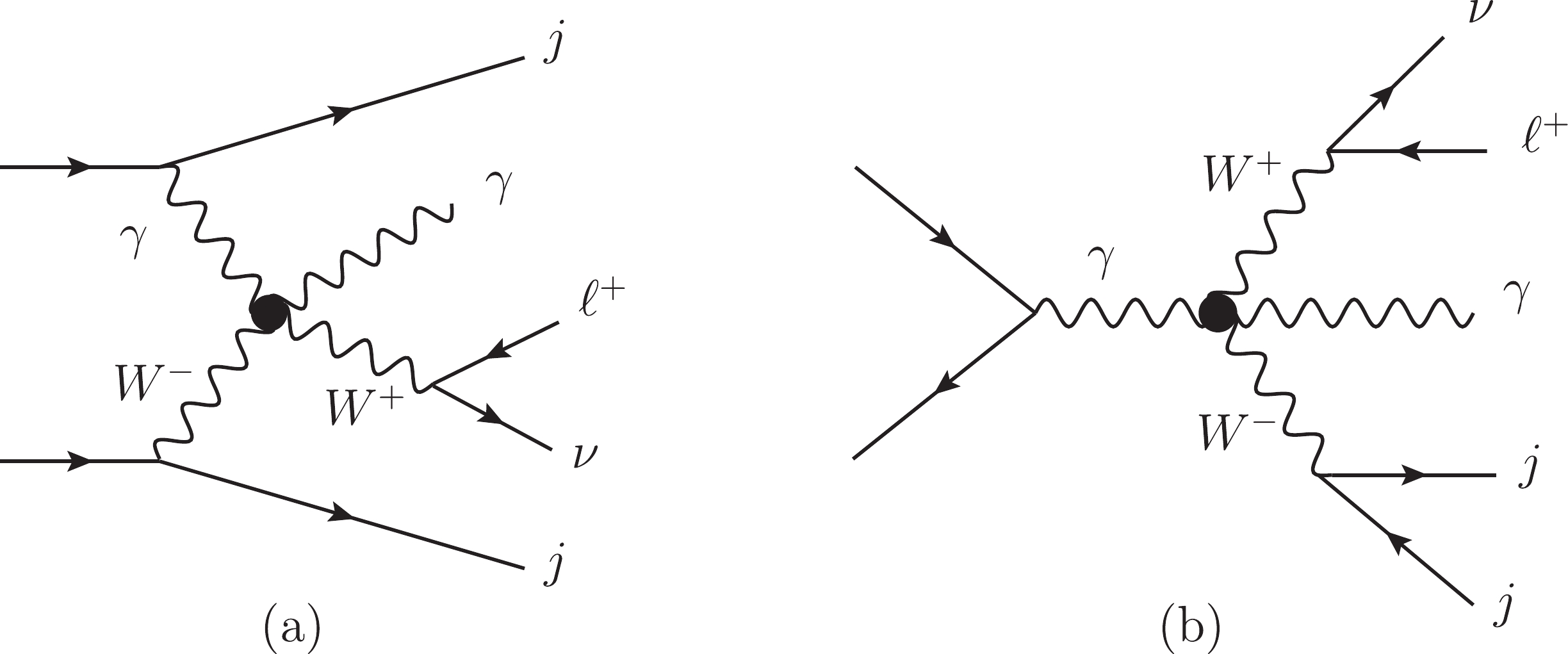 Figure1. Typical aQGC diagrams contributing to
Figure1. Typical aQGC diagrams contributing to 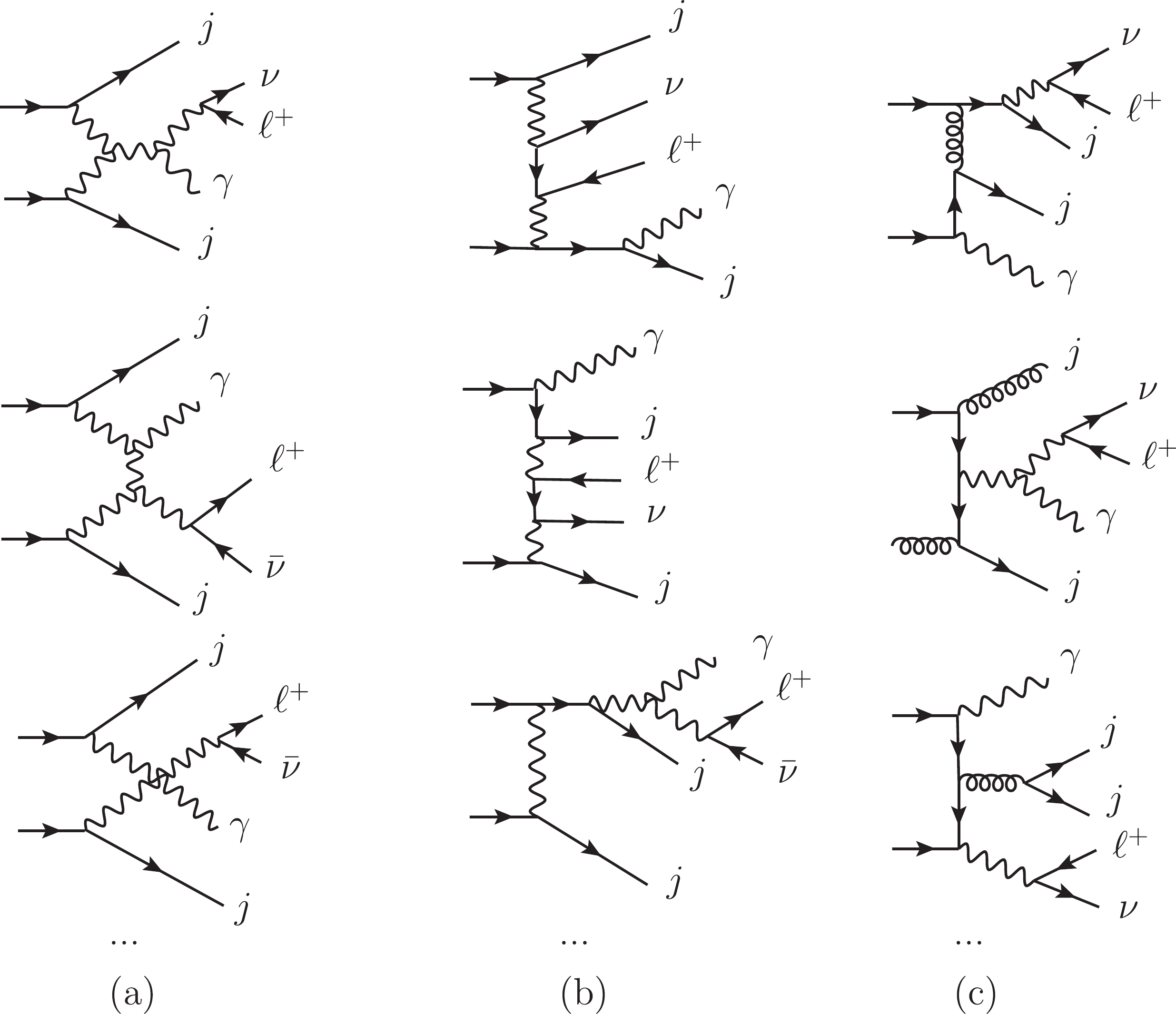 Figure2. Typical Feynman diagrams of SM backgrounds including (a) EW-VBS, (b) EW-non-VBS, and (c) QCD diagrams.
Figure2. Typical Feynman diagrams of SM backgrounds including (a) EW-VBS, (b) EW-non-VBS, and (c) QCD diagrams.The numerical results are obtained through the Monte-Carlo (MC) simulation using the MadGraph5_aMC@NLO (MG5) toolkit [72]. The parton distribution function is NNPDF2.3 [73]. The renormalization scale
$ I_{\min}^{\gamma} = \frac{\displaystyle\sum\nolimits_{i\neq \gamma}^{\Delta R<\Delta R_{\max}, {\vec p}_T^{i}>{\vec p}_{T,\min}} {\vec p}^{i}_T}{{\vec p}_T^{\gamma}}, $  | (15) |
Since the
2
4.1.Implementation of unitarity bounds
To ensure that the events are generated by the EFT in a valid region, the unitarity bounds are applied as cuts on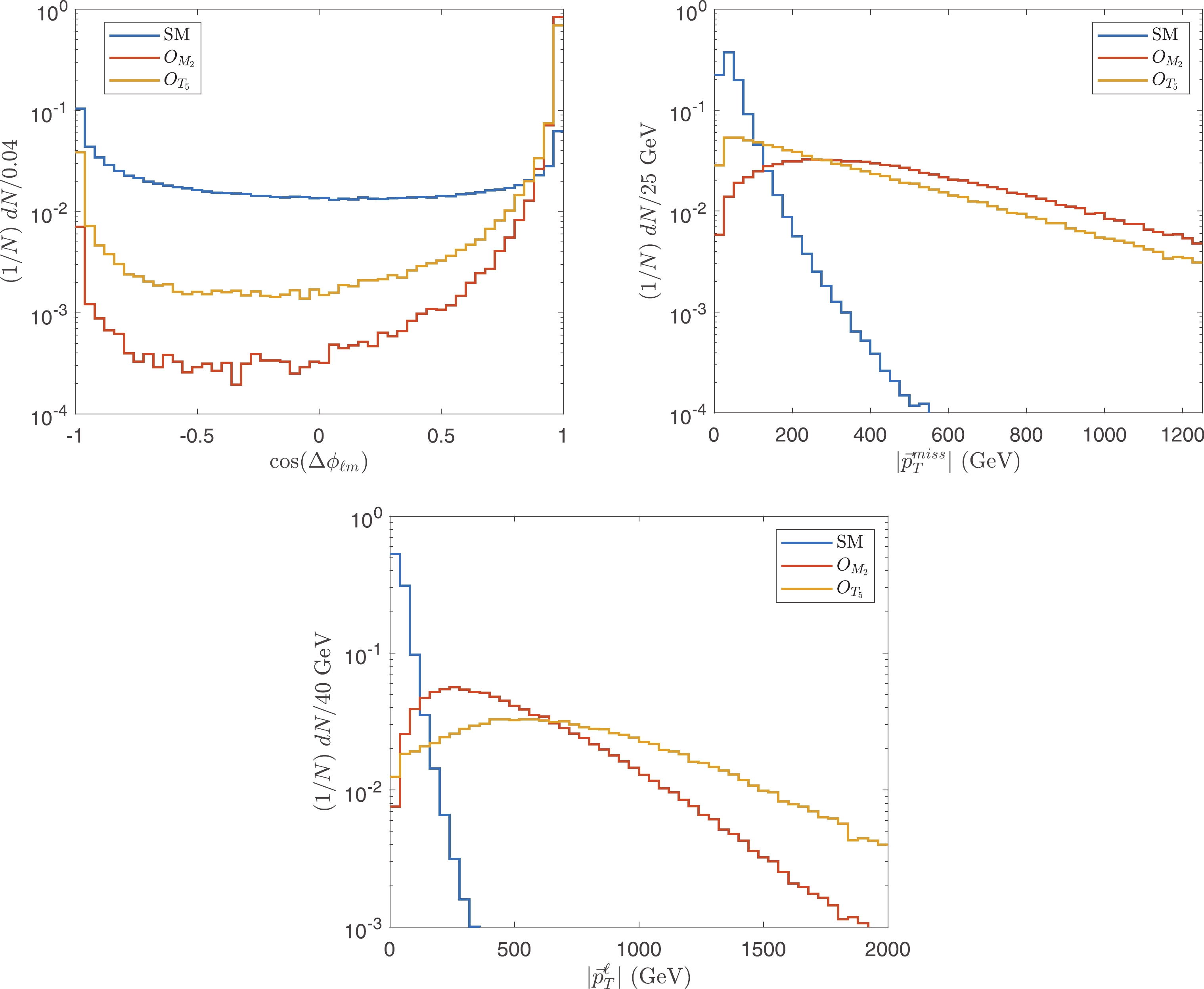 Figure3. (color online) Normalized distributions of
Figure3. (color online) Normalized distributions of Using the approximation that the neutrino and charged lepton are nearly parallel to each other, and by also requiring
$ \begin{split} \tilde{s} =& \left(\sqrt{|\vec{p}_T^{\rm miss}|^2+\left(\frac{|\vec{p}^{\rm miss}_T|}{|\vec{p}_T^{\ell}|}p^{\ell}_z\right)^2}+E_{\ell}+E_{\gamma}\right)^2\\& -\left(\left(1+\frac{|\vec{p}^{\rm miss}_T|}{|\vec{p}_T^{\ell}|}\right)p_z^{\ell}+p_z^{\gamma}\right)^2-\left|\vec{p}_T^{\ell}+\vec{p}_T^{\rm miss}+\vec{p}_T^{\gamma}\right|^2, \end{split} $  | (16) |
To verify the approximation accuracy, we calculate both
 Figure4. (color online) Correlation between
Figure4. (color online) Correlation between The unitarity bounds are realized as energy cuts using
$\begin{split}& \tilde{s}(f_{M_2}) \leqslant \sqrt{\frac{s_W^2 256 \pi M_W^2 \Lambda^4}{c_W^2e^2 v^2 |f_{M_2}|}},\;\; \tilde{s}(f_{M_3}) \leqslant \sqrt{\frac{384 \pi s_W^2 M_W^2 \Lambda^4}{c_W^2e^2v^2 |f_{M_3}|}},\\& \tilde{s}(f_{M_4}) \!\leqslant\!\! \sqrt{\frac{512 \pi M_WM_Zs_W^2 \Lambda^4}{e^2 v^2 |f_{M_4}|}},\, \tilde{s}(f_{M_5})\! \leqslant \!\!\sqrt{\frac{384\pi M_WM_Zs_W \Lambda^4}{c_We^2v^2 |f_{M_5}|}},\\& \tilde{s}(f_{T_5}) \leqslant \sqrt{\frac{40\pi \Lambda^4}{c_W^2 |f_{T_5}|}},\;\; \tilde{s}(f_{T_6}) \leqslant \sqrt{\frac{32\pi \Lambda^4}{c_W^2 |f_{T_6}|}},\;\; \tilde{s}(f_{T_7}) \leqslant \sqrt{\frac{64\pi \Lambda^4}{c_W^2 |f_{T_7}|}}. \end{split} $  | (17) |
| Channel/fb | no cut |   |   |   |   |   |
| SM |   |   |   |   |   | ? |
  |   |   |   |   |   |   |
  |   |   |   |   |   |   |
  |   |   |   |   |   |   |
  |   |   |   |   |   |   |
  |   |   |   |   |   |   |
  |   |   |   |   |   |   |
  |   |   |   |   |   |   |
Table4.Cross sections of SM backgrounds and signals for various operators after
From Table 4, it is evident that the unitarity bounds have significant suppressive impacts on the signals, particularly for the
2
4.2.Kinematic features of aQGCs
As already mentioned, the VBS processes do not increase with Figure5. (color online) Normalized distributions of
Figure5. (color online) Normalized distributions of For the lepton and photon, the cuts are mainly to select events with large
There are other sensitive observables to select large
2
4.3.Polarization features of aQGCs
To improve the event select strategy, we investigate the polarization features that are less correlated with $ \frac{{\rm d}\sigma}{{\rm d}\cos \theta^*}\propto f_L \frac{(1-\cos (\theta ^*))^2}{4}+f_R\frac{(1+\cos (\theta ^*))^2}{4} +f_0 \frac{\sin^2(\theta ^*)}{2}, $  | (18) |
$ L_p = \frac{\vec{p}_T^{\ell}\cdot \vec{p}_T^W}{|\vec{p}_T^W|^2}, $  | (19) |
 Figure6. (color online) Normalized distributions of
Figure6. (color online) Normalized distributions of As presented in Tables 2 and 3, the polarization of the
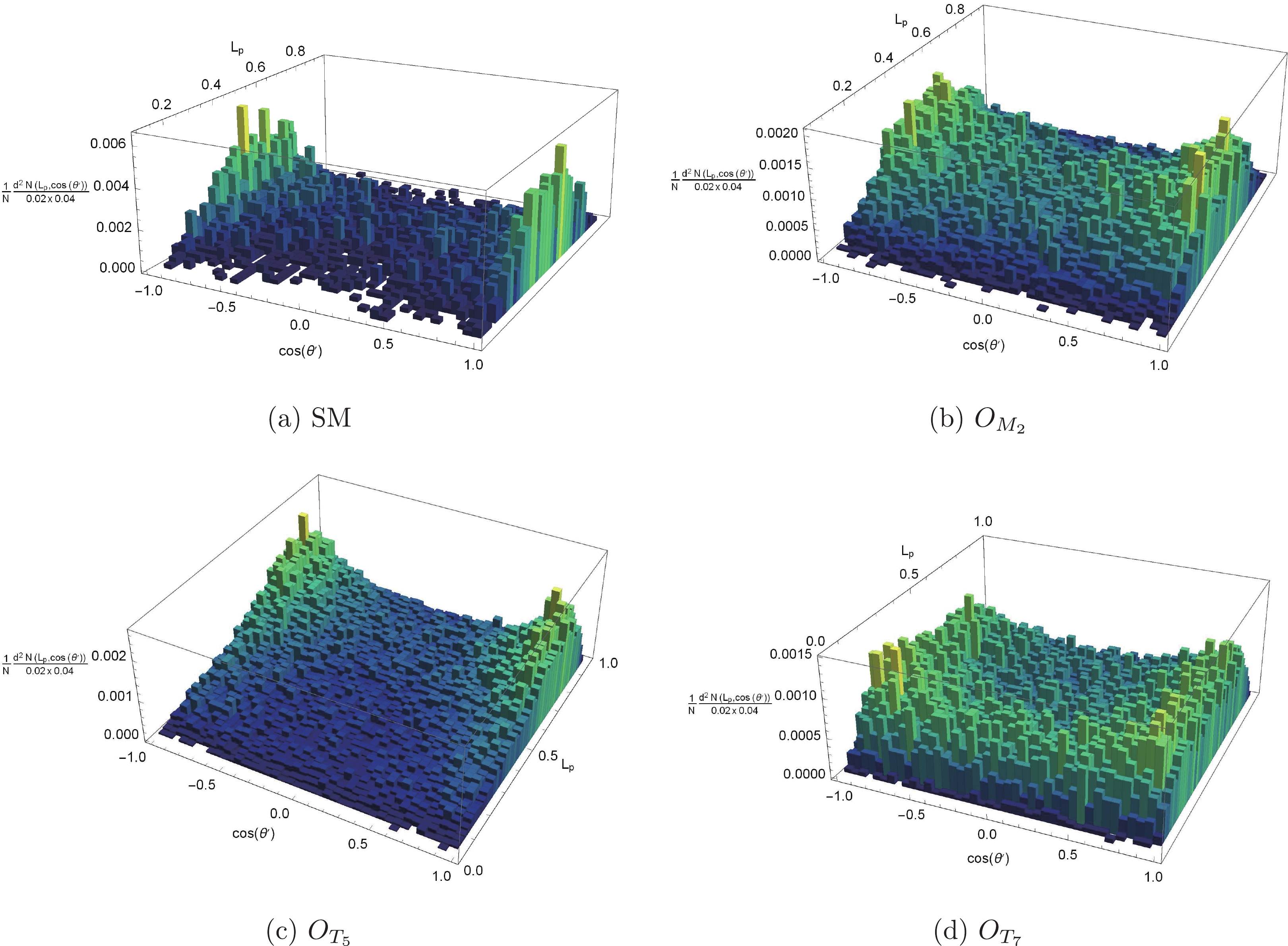 Figure7. (color online) Normalized distributions of
Figure7. (color online) Normalized distributions of $r = \left(1-\left|\cos (\theta')\right|\right)^2+\left(\frac{1}{2}-L_p\right)^2, $  | (20) |
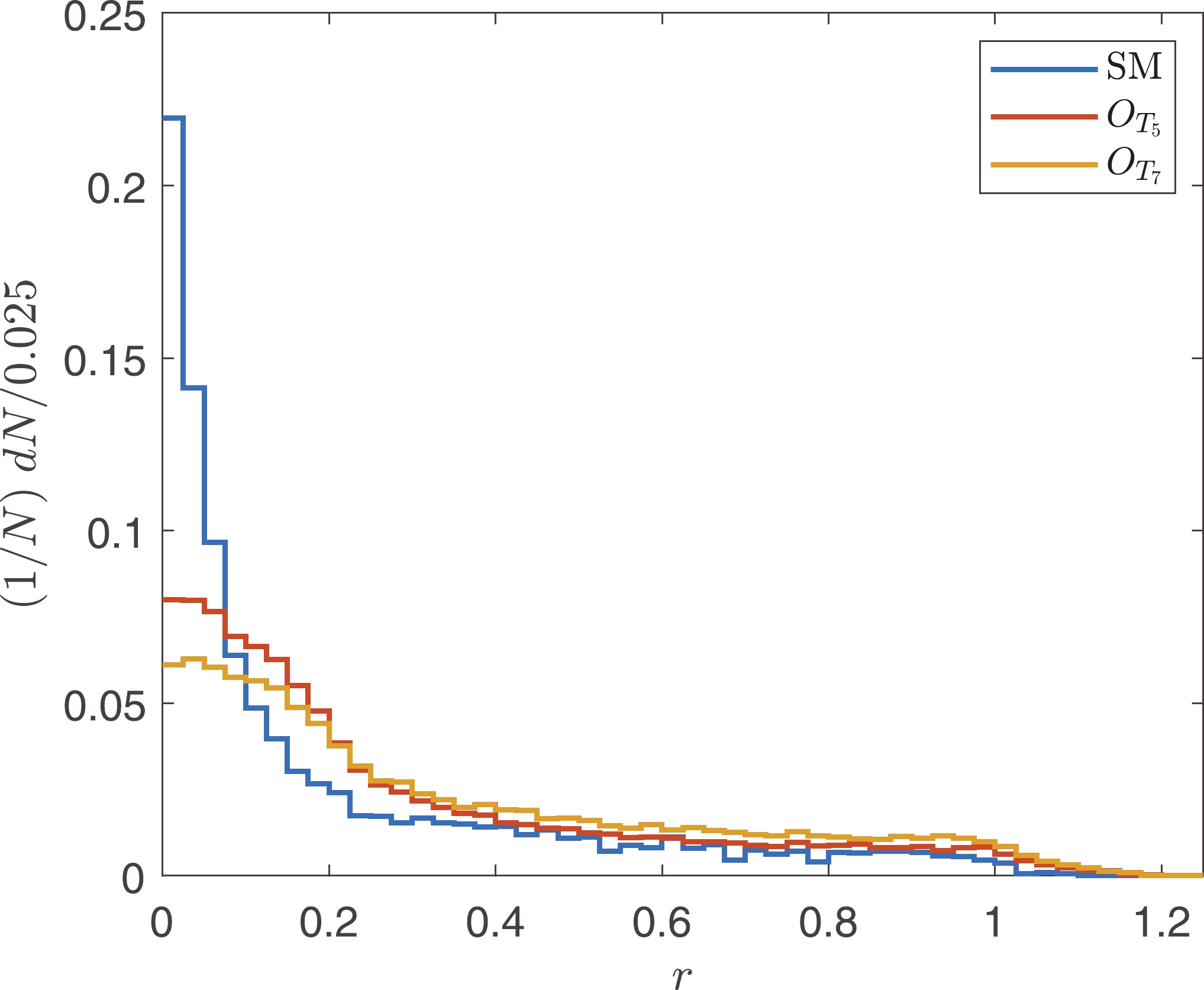 Figure8. (color online) Normalized distributions of
Figure8. (color online) Normalized distributions of To verify that
 Figure9. (color online) Correlations between
Figure9. (color online) Correlations between 2
4.4.Summary of cuts
For various operators, the kinematic and polarization features are different. Therefore, we propose to use various cuts to search for different operators, as summarized in Table 5. Note that  |   |
  |   |
  |     |
Table5.Two classes of cuts.
The results are shown in Table 6. The statistical error is negligible compared with the systematic error; therefore, it is not presented. The large SM backgrounds can be reduced effectively using our selection strategy.
| Channel | after   | after   |     |
| SM |   |   |     |
    | |||
  |   |   |   |
  |   |   |   |
  |   |   |   |
  |   |   |   |
  |   |   |   |
  |   |   |   |
  |   |   |   |
Table6.Cross sections (fb) of signals and SM backgrounds after
To investigate the parameter space, we generate events with each operator individually. The unitarity bounds are set as
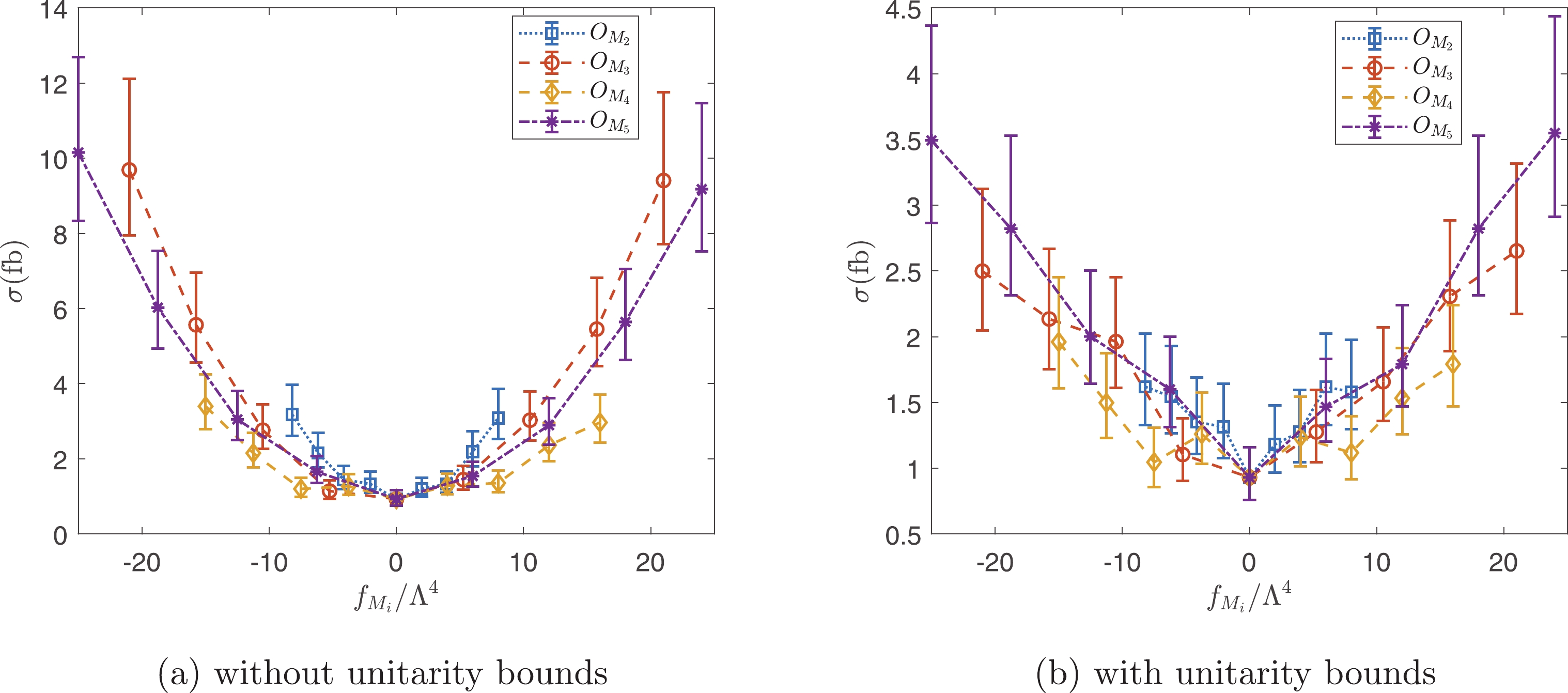 Figure10. (color online) Cross sections as functions of
Figure10. (color online) Cross sections as functions of 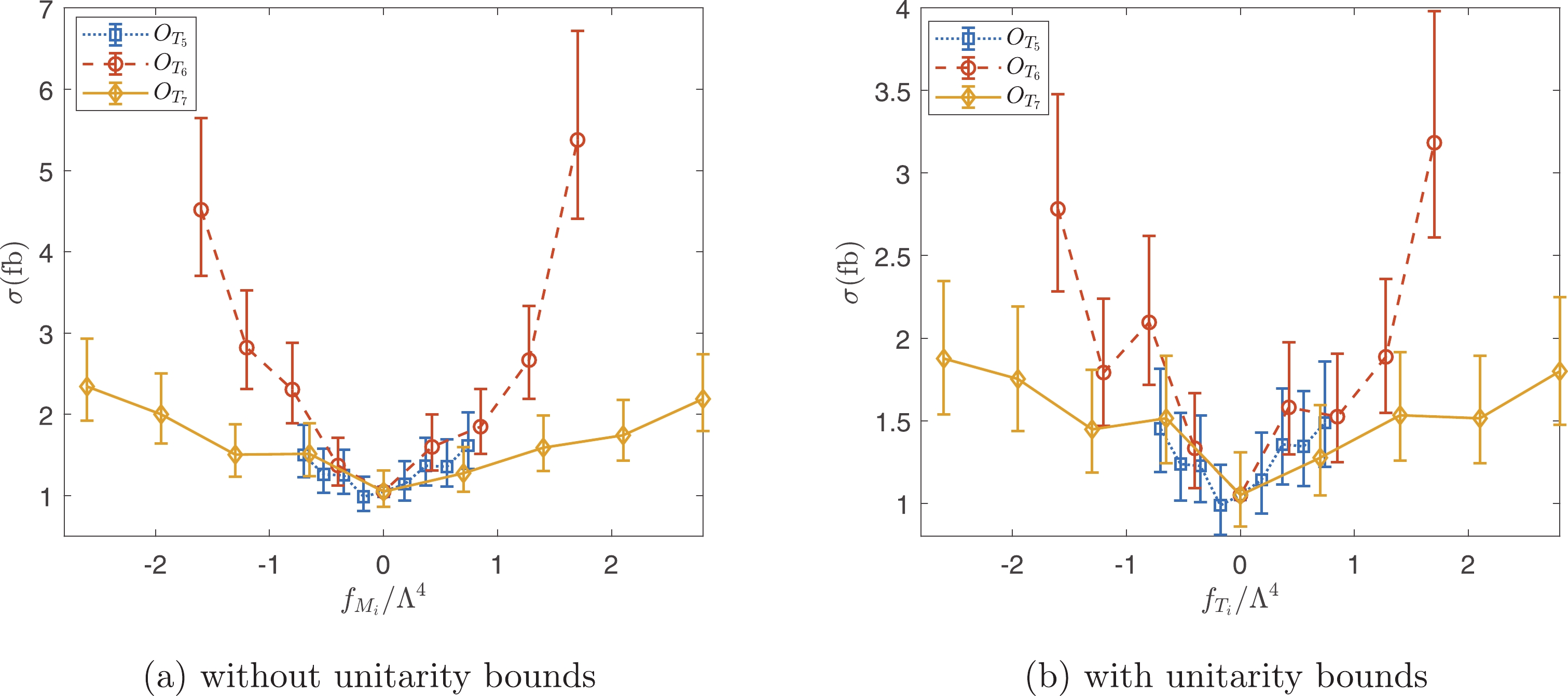 Figure11. (color online) Cross sections as functions of
Figure11. (color online) Cross sections as functions of The constraints on operator coefficients can be estimated with the help of statistical significance defined as
| Coefficients |   | Coefficients |   | |
  |   |   |   | |
  |   |   |   | |
  |   |   |   | |
  |   |
Table7.Constraints on operators at LHC with
An important consideration regarding the SMEFT is that of its validity. We studied the validity of the SMEFT using the partial-wave unitarity bound, which sets an upper bound on
To study the discovery potential of aQGCs, we investigate the kinematic features of the signals induced by aQGCs and find that
We thank Jian Wang and Cen Zhang for useful discussions.





